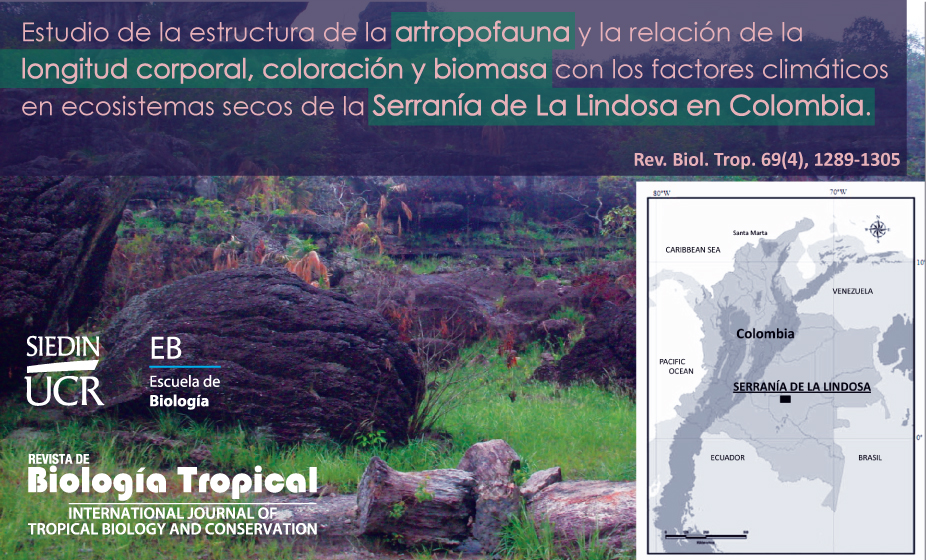Abstract
Introduction: Despite growing interest by the ecosystems derived from the Guyanese formations, the vertical structure of the communities and relationships of the biota with the climatic conditions in these ecosystems are unknown. Objective: Characterize the structure and vertical composition of the arthropod fauna associated with three of the most representative ecosystems of the Northern area of the serranía de La Lindosa in Colombia based on morphological and ecological parameters. Methods: The arthropod fauna was sampled, from the subsurface soil level to the shrub and tree stratum. The fauna was determined up to the level of family or supraspecific group and the values of Alfa and Beta diversity were determined. Body length measurements were made, and the coloration and trophic level of each group were determined. Results: The composition and diversity of the arthropod fauna was different in each ecosystem and vertical stratum and most of the groups in all the ecosystems studied present low abundances. Groups of phytophagous and predatory habits were frequent in all ecosystems and the highest biomass of arthropod fauna comes from groups of polyphagous habits, of medium size and great abundance. Light and dark colorations are the most frequent in landscape-scale. Conclusion: The ecosystems studied are characterized by the low values of diversity and replacement and the large number of non-shared groups that apparently respond to the microclimatic characteristics; however, there are some generalities on a landscape scale such as the greater richness and abundance of groups in the intermediate strata, the greater proportion of groups with phytophagous habits and medium body sizes, and the predominance of dark colorations in the lower strata.
Comments

This work is licensed under a Creative Commons Attribution 4.0 International License.
Copyright (c) 2021 Revista de Biología Tropical







